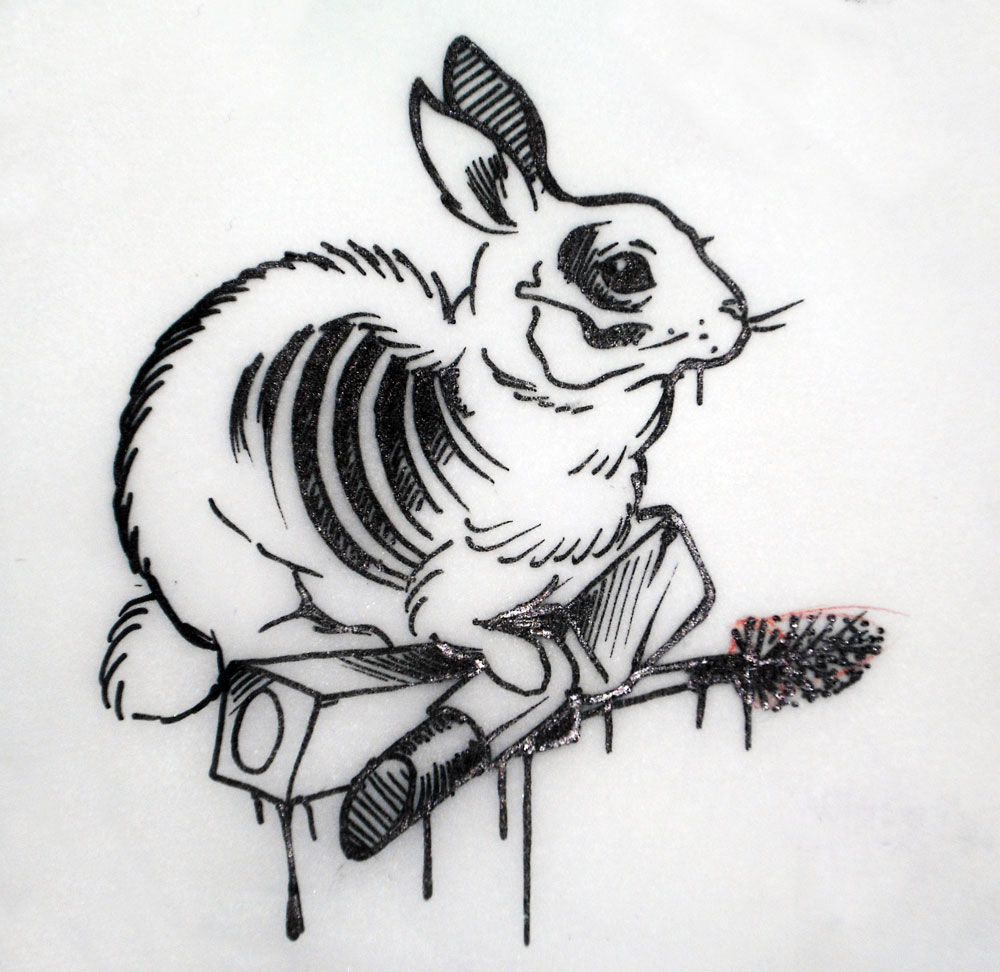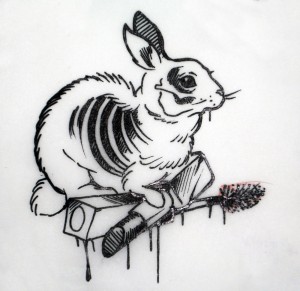
Cosmetic Industry and Animal Testing
January 31, 2012Student Blogs Article The Cartesian thesis which maintained that animals’ lack of consciousness implied that they should be treated as objects rather than sentient beings and denied their ability to feel pain[1], has faded away, and is nowadays believed to be a “monstrous thesis”[2]. These moral and philosophical considerations have even started to reflect in different countries’ legislations, but the level of protection awarded to animals is highly uneven, and unfortunately insufficient.
The Cartesian thesis which maintained that animals’ lack of consciousness implied that they should be treated as objects rather than sentient beings and denied their ability to feel pain[1], has faded away, and is nowadays believed to be a “monstrous thesis”[2]. These moral and philosophical considerations have even started to reflect in different countries’ legislations, but the level of protection awarded to animals is highly uneven, and unfortunately insufficient.
People who advocate animal rights[3] have acclaimed the European legislation on animal testing in the cosmetics industry, but one should not be too quick to cry victory. Indeed, if the commonly named “Cosmetic Directive”[4], a legislation originally designed to provide a uniform level of health protection in the member states, has, as early as in 1993, started taking animal welfare into account by way of a revolutionary provision foreseeing a complete ban on animal testing, its implementation has proved quite disappointing.
A brief overview of the European legal landscape appears necessary to the understanding of this critic of the ineffective application of an otherwise satisfactory piece of legislation. European legislation is the product of a co-decision procedure among the European Parliament, the European Council, and the European Commission, which respectively represent the interests of the European citizens, of the governments of the member states, and finally of the European Union itself. The upholders of animal rights have envied the European forward-looking state of mind, but the truth is that the Cosmetic Directive’s animal testing ban reflects the will of the European citizens, whereas it is not supported by all the European institutions, or by all national governments.
If most national governments complied willingly with the provisions of the Cosmetics Directive, France, which enjoys a leading position in the cosmetics industry as well as one of the highest levels of consumption of cosmetic products per habitant[5], expressed its reluctance to accept the new European legislation, when it challenged its validity[6]. France argued that the Directive lacked clarity, and that the goal of protection of the animals did not represent an interest sufficient to limit freedom to exercise a professional activity[7], an attempt to annihilate a historic provision on animal welfare which was described as shameful and appalling[8].
As far as the European Commission is concerned, it has tried, unsuccessfully, to limit the impact of the Directive, by ascertaining that the ban should only concern the ability to resort to animal experimentation within the European boundaries, to the exclusion of a marketing ban[9]. But such a restriction would have rendered the testing ban useless since European cosmetic laboratories would have been able to relocate the animal testing outside the EU. Despite the Commission’s hinderance, a marketing as well as a testing ban came into effect in 2009, but this prohibition merely applies to specific tests for which alternative testing methods have already been validated. The tests that concern the most complex health effects (namely repeated dose toxicity, reproductive toxicity, toxicokinectics) will only be banned in 2013, a deadline that is unlikely to be respected by the Commission. As a result, in Europe, laboratories are still able to market some products that have been tested on animals, a situation that will probably endure.
Furthermore, one should remain mindful of the incessant critics addressed by the Parliament to the European Commission, which has constantly endeavored to delay the enforcement of the ban. Of course, the Directive itself provided for a possible delay of the prohibition[10] in the event of a failure to develop alternative testing methods, but it seems that the Commission has abused its prerogative, as it has postponed the ban’s deadline once too many times. Originally, a complete prohibition should have been implemented in 1998, but it has been regularly delayed on the basis of the yearly reports of the Commission that kept repeating that some very good progress was made[11], but full replacement of in vivo experimentation would not be available before the deadline. We are now in 2012, and the Commission recently asserted that for the scientific tests concerning the most complex health effects, a 2020 deadline was optimistic and even refused to establish a timeline[12]. One can only join the European Parliament as it deplores and challenges the legality of these incessant postponements[13], and “calls into question whether all reasonable endeavors have been made to develop and validate such alternatives”[14].
Thus, the Commission is treating what was praised as a revolutionary ban on animal testing as if it were a mere application of the « Three Rs method » (which consists of the “Replacement” of animal testing by alternative methods whenever possible, the “Reduction” of the number of animals, and the “Refinement” of the testing methods in order to reduce the amount of pain inflicted). The use of the Three R’s method is an acknowledgement that animals deserve the protection of the law, but is far from being an innovation, since it was developed in 1959 by Russel and Burch and has been a component of European law since … 1986. Indeed, the 86/609/EEC Directive, that was not limited to the cosmetics industry, already stated that “an experiment shall not be performed if another scientifically satisfactory method of obtaining the result sought, not entailing the use of an animal, is reasonably and practicably available.”[15]
[1]Discourse on the Method and Meditations on First Philosophy, part V, Hackett Publishing Company 1998, 4th Ed.
[2]Norman Kemp Smith, New studies in the philosophy of Descartes (New York : Russel and Russel 1963) p.135
[3]Physician Commity for responsible medicine : http://www.bornfreeusa.org/articles.php?p=449&more=1; and http://www.pcrm.org/media/news/americans-support-ban-cosmetics-testing-animals.
[4]Council Directive 76/768/EEC on the approximation of the laws of the Member States relating to cosmetic products. See at: http://eur-lex.europa.eu/LexUriServ/LexUriServ.do?uri=CELEX:31976L0768:EN:NOT. The Cosmetic Directive will be replaced by Regulation (EC) No 1223/2009 on July 11, 2013.
[5]http://www.arehn.asso.fr/dossiers/cosmetiques/cosmetiques.html http://ec.europa.eu/enterprise/newsroom/cf/_getdocument.cfm?doc_id=4561
[6]Case C-244/03 French Republic v. European Parliament and Council of the European Union.
[7]Opinion of Advocate General Geelhoed 17 March 2005.
[8]http://www.guardian.co.uk/world/2003/aug/19/eu.businessofresearch
[9]Recommendation for a second reading on the Council common position for adopting a European Parliament and Council directive amending Council Directive 76/768/ECC; (15073/1/01-C5-0072/2002-2000/0077(COD)) p.34.
[10]Council Directive 93/35/EEC of 14 June 1993, amending §4(1) of the Directive 76/768/EEC. See at: http://eur-lex.europa.eu/LexUriServ/LexUriServ.do?uri=CELEX:31993L0035:EN:HTML
[11]1997 Commission report on the development, validation and legal acceptance of alternative methods to animal experiments in the field of cosmetics. See at: http://ec.europa.eu/consumers/sectors/cosmetics/files/doc/1997_comm_report_animal_test_en.pdf
[12]Resolution on the Commission report on the development, validation and legal acceptance of alternative methods to animal experiments in the field of cosmetic products – 1995 (COM(96)0365 C4-0662/96), Official Journal C 132 , 28/04/1997 P. 0027
[13]European Parliament resolution on the postponement of the ban on the marketing of cosmetics tested on animals; P5_TA(2002)0435: “the power that the Commission purported to confer upon itself pursuant to Directive 97/18/EC in order to effect further postponements of the date of entry into force of the marketing ban is of questionable legality”; OJ 2003 C 273E/12.
[14]Parliament Resolution on the Commission report on the development, validation and legal acceptance of alternative methods to animal experiments in the field of cosmetic products – 1995 (COM(96)0365 C4-0662/96); Official Journal C 132, 28/04/1997 p.0027.
[15]Council Directive of 24 November 1986 on the approximation of laws, regulations and administrative provisions of the Member States regarding the protection of animals used for experimental and other scientific purposes (86/609/EEC), article 7§2.
You may also like
- April 2024
- March 2024
- February 2024
- November 2023
- October 2023
- April 2023
- March 2023
- February 2023
- January 2023
- December 2022
- November 2022
- October 2022
- May 2022
- April 2022
- March 2022
- February 2022
- January 2022
- December 2021
- November 2021
- October 2021
- May 2021
- April 2021
- March 2021
- February 2021
- January 2021
- November 2020
- October 2020
- September 2020
- August 2020
- July 2020
- June 2020
- May 2020
- April 2020
- March 2020
- February 2020
- January 2020
- November 2019
- October 2019
- September 2019
- April 2019
- February 2019
- December 2018
- November 2018
- October 2018
- September 2018
- March 2018
- February 2018
- January 2018
- December 2017
- November 2017
- October 2017
- September 2017
- May 2017
- April 2017
- March 2017
- February 2017
- December 2016
- November 2016
- October 2016
- April 2016
- March 2016
- February 2016
- January 2016
- December 2015
- November 2015
- October 2015
- June 2015
- May 2015
- April 2015
- March 2015
- February 2015
- January 2015
- December 2014
- November 2014
- October 2014
- August 2014
- March 2014
- February 2014
- January 2014
- December 2013
- November 2013
- October 2013
- September 2013
- May 2013
- April 2013
- March 2013
- February 2013
- January 2013
- December 2012
- November 2012
- October 2012
- September 2012
- June 2012
- April 2012
- March 2012
- February 2012
- January 2012
- December 2011
- November 2011
- October 2011
- September 2011
- August 2011
- April 2011
- March 2011
- November 2010
- October 2010
- September 2010
